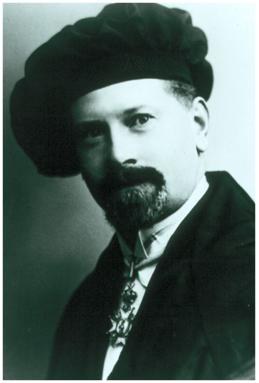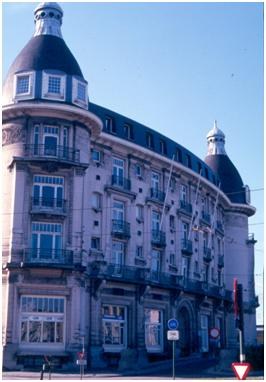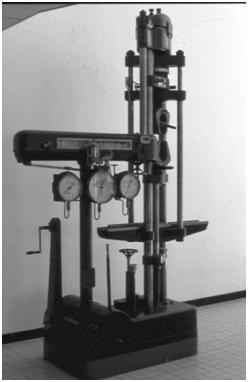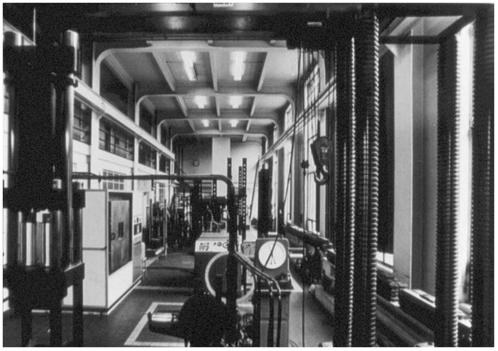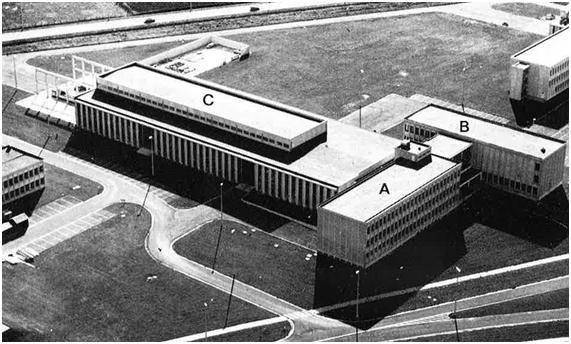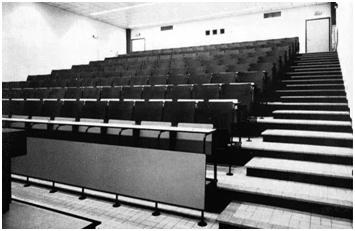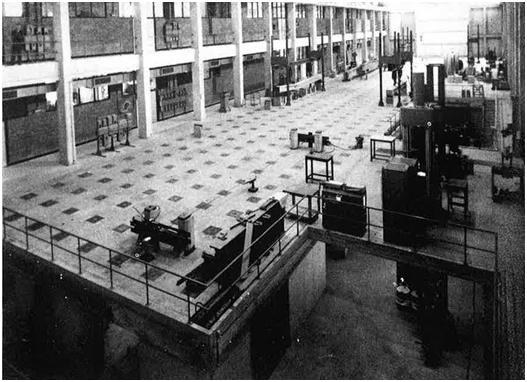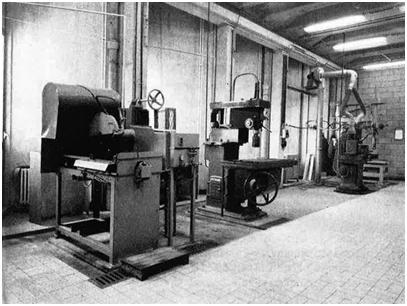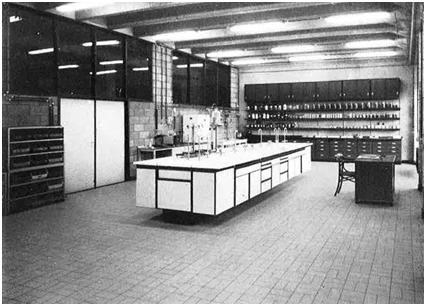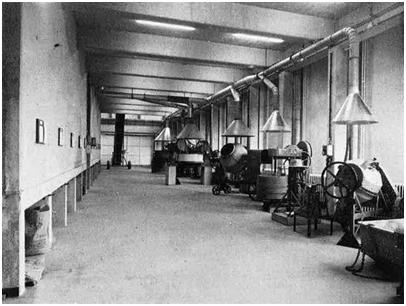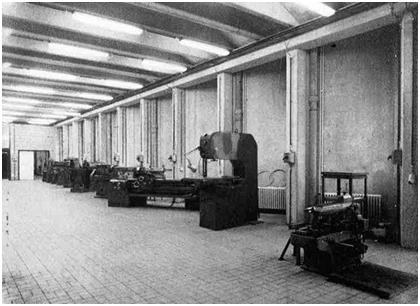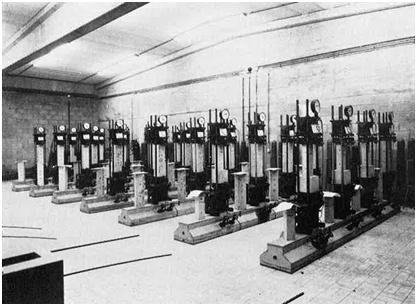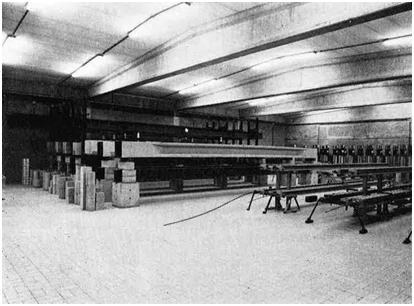History
The Magnel Laboratory was founded in 1926 by Professor Gustave Magnel (1889-1955) under the Department for State Railways in order to meet the urgent need for concrete research.
Prof. Gustave Magnel (1889-1955)
In this first period, the Laboratory was located in the buildings of the old hotel “Flandria Palace” near the railway station Sint-Pieters in Ghent.
Flandria Palace (left) and test equipment from this earlier period (right)
During this first period, the Laboratory had to be established using very limited financial resources. A specialized technical staff had to be educated and testing equipment had to be purchased.
From 1926 till 1937, the Laboratory progressively expanded with increasing awareness of its important scientific task. Meanwhile, the laboratory became attached to the Ministry of Public Education in 1930 and as such obtained the status of University Laboratory.
On June 1st 1937, the Labotory moved towards the new and more spacious rooms of the “Technicum” located on the hill of the “Blandinusberg” in the centre of Ghent.
Test floor at the “Technicum”
After the war period 1940-1945, during which its scientific activities were restrained, the development of the Laboratory flourished again. A first expansion of the location arrived in 1950, a second in 1959. In 1950, the rooms were the Laboratory was located expanded from 1600 m² to 2250 m² and the mechanical equipment for large-scale tests (until 20 m length) under static and dynamic loading was first put into operation. In 1959 the floor area increased towards 3500 m² (more than the double of the available floor area in 1937), which enabled to set up large climate rooms for long-term testing.
In 1969 the Board of Governors of Ghent University decided to reallocate different buildings of the Faculty of Applied Sciences towards a new Campus in the former village of Zwijnaarde, at the boarder of the city of Ghent. The rooms which the Laboratory occupied in the Technicum became, despite the extensions in 1950 and 1959, too small to accommodate the increasing scale of elements that had to be tested. Furthermore, also the access of the testing rooms was difficult, certainly for these large-scale test elements, as the testing floor is located at 12 m below the level of the Sint-Pietersnieuwstraat. The private road beside the river Scheldt only allowed access for test elements up to 14 m. As such, moving the Laboratory to a more accessible location was desired. This location was found in the proximity of the former highway interchange E3/E5 (currently E17/E40) (connecting Antwerp – Lille and Brussels – Ostend). This very accessible location has many advantages.
During several years, the concept and plans for the new Laboratory were developed. The construction works started on December 6th 1971 and were finished on August 9th 1974. On February 1st 1975 moving the testing equipment from the Technicum towards to the new building at the Campus Ardoyen in Zwijnaarde started. An impression of the starting period of the Laboratory on the site of Zwijnaarde is provided below by several historical pictures dating from this period.
New buildings for the Magnel Laboratory at Campus Ardoyen in Zwijnaarde and Auditorium Magnel
The strong floor of the Magnel Laboratory - Equipment for compression and tensile tests
Equipment for preparation of test specimens - The chemistry room
The concrete manufacturing room - The metalworking room
Creep tests in the large climate room - Large-scale test specimens in the large climate room
